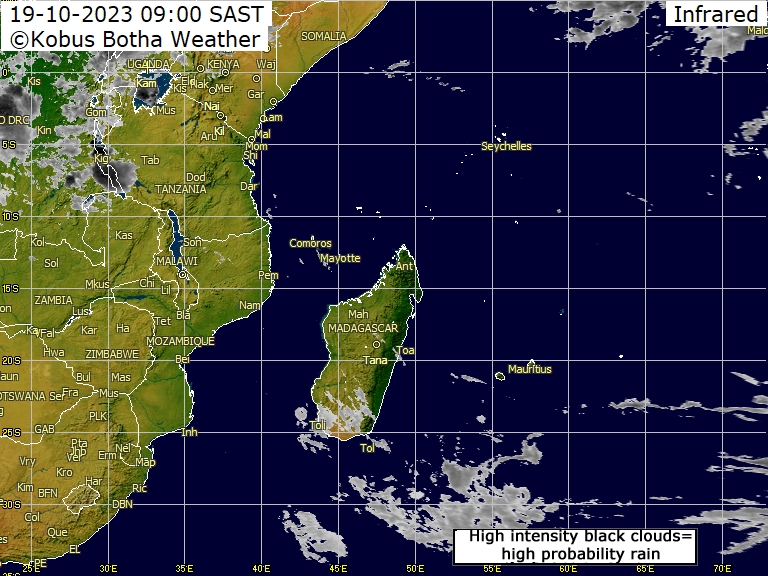
Ciclone Tropical Kate em direção ao sul no Oceano Índico.
IMAGENS EM TEMPO REAL

Aqui ciclone tropical Kate categoria 1 dia 26.12.2014 à oeste das ilhas Cocos(temperatura do ar 25°C) no Oceano Índico pelo Google Earth.
| Last Updated | 27/12/2014, 04:00:00 (Hora oficial do Brasil) | ||
| Location | -13N 266.4E | Movement | SW at 1 mph |
| Wind | 195KPH | ||
| Last Updated | 26/12/2014, 16:00:00 (Hora oficial do Brasil) | ||
| Location | -12.6N 266E | Movement | SW at 4 mph |
| Wind | 195KPH CATEGORIA 3 | ||
| Last Updated | 26/12/2014, 10:00:00 (Hora oficial do Brasil) | |||
| Location | -12.4N 265.8E | Movement | W at 3 mph | |
| Wind | 130KPH | |||
abc.net.au
Cocos Islands buffeted by strong winds as Tropical Cyclone Kate passes to the north
Updated
Locals on the Cocos Islands have spent Christmas Day
hunkered down in their homes, as Tropical Cyclone Kate passed just north
of the tiny community more than 2,000 kilometres off the West
Australian coast.
The Bureau of Meteorology said the category one
tropical cyclone passed just 40 kilometres north-west of the islands
Thursday afternoon.It said damaging wind gusts of more than 100 kilometres an hour were felt in the remote Indian Ocean territories, which are home to about 600 people.
The area was also hit with heavy rain, with the islands recording almost 140 millimetres of rain in 24 hours.
Cocos Islands resident Amber Watters said most locals spent the day indoors, and only ventured outside to help others repair damage to their homes.
"We experienced some heavy showers and also heavy winds, it was not as strong as what we were predicting, so it's quite moderate and mild at the moment really," she said on Thursday night.
"Some roofs had some issues, we lost a couple of the tops of roofing panels, so they were attended to urgently as best as could be done.
"We were put on a yellow alert earlier in the day, just so that people didn't go out in harm's way, so we stayed put until we had to assist with the roof that was coming apart across the road."
Ms Watters said residents would most likely spend Boxing Day dealing with the aftermath of the cyclone.
"Once we've been given the all clear to move around the Department of Fire and Emergency Service volunteers together with the emergency management committee and Department of Infrastructure and basically the community really will just get out there and tidy up the tree branches and things that have fallen," she said.
"DFES will attend to appropriately addressing a couple of roofs that lost their bits and pieces.
"We're pleased that the cyclone passed... it worked out to be an okay Christmas Day after all even if we were couped up inside."
Communities on Home and West Island have been urged to listen for the bureau's next advice.
eurekalert.org
Public Release: NASA-NOAA's Suomi NPP satellite spots birth of Tropical Cyclone Kate
Credit: Image Credit:
NASA/NOAA
NASA-NOAA's Suomi NPP satellite flew over newborn Tropical Cyclone Kate on Dec. 24 at 06:39 UTC (1:39 a.m. EST) and the Visible Infrared Imaging Radiometer Suite or VIIRS instrument aboard captured a visible image of the storm. The VIIRS image showed strong thunderstorms around the center of circulation. There was also a large band of thunderstorms south of the center wrapping into it from the southwestern quadrant.
VIIRS is a scanning radiometer that collects visible and infrared imagery and "radiometric" measurements. Basically it means that VIIRS data is used to measure cloud and aerosol properties, ocean color, sea and land surface temperature, ice motion and temperature, fires, and Earth's albedo (reflected light).
According to the Australian Bureau of Meteorology (ABM), at 8:00 pm WST local time (7 a.m. EST) on Dec. 24, Tropical Cyclone Kate had maximum sustained winds near 65 kilometers per hour (40 mph). It is centered near 10.9 south latitude and 98.4 longitude, or about 225 km (139.8 miles) northeast of Cocos Island. Kate is moving to the west-southwest at 19 kph (11.8 mph).
ABM says "The system has intensified and has been name Tropical Cyclone Kate. It is possible that gales will commence on the [Cocos] islands before sunrise Thursday, Dec. 25 (Christmas Day). The period of greatest risk is likely to be during the afternoon and evening on Christmas Day.
ABM stated that cyclone impacts for the Cocos Keeling Islands should be expected during Christmas and Boxing Day. The Australian Federal Police have advised a Blue Alert for communities on Home and West Island. ABM noted that the center of the tropical cyclone is expected to pass close to the islands during the afternoon of Dec. 25 (local time) and will cause very rough seas as it approaches the Cocos Keeling Islands.
###
For updated forecasts, please visit the ABM website at: http://www.Rob Gutro
NASA's Goddard Space Flight Center





Nenhum comentário:
Postar um comentário